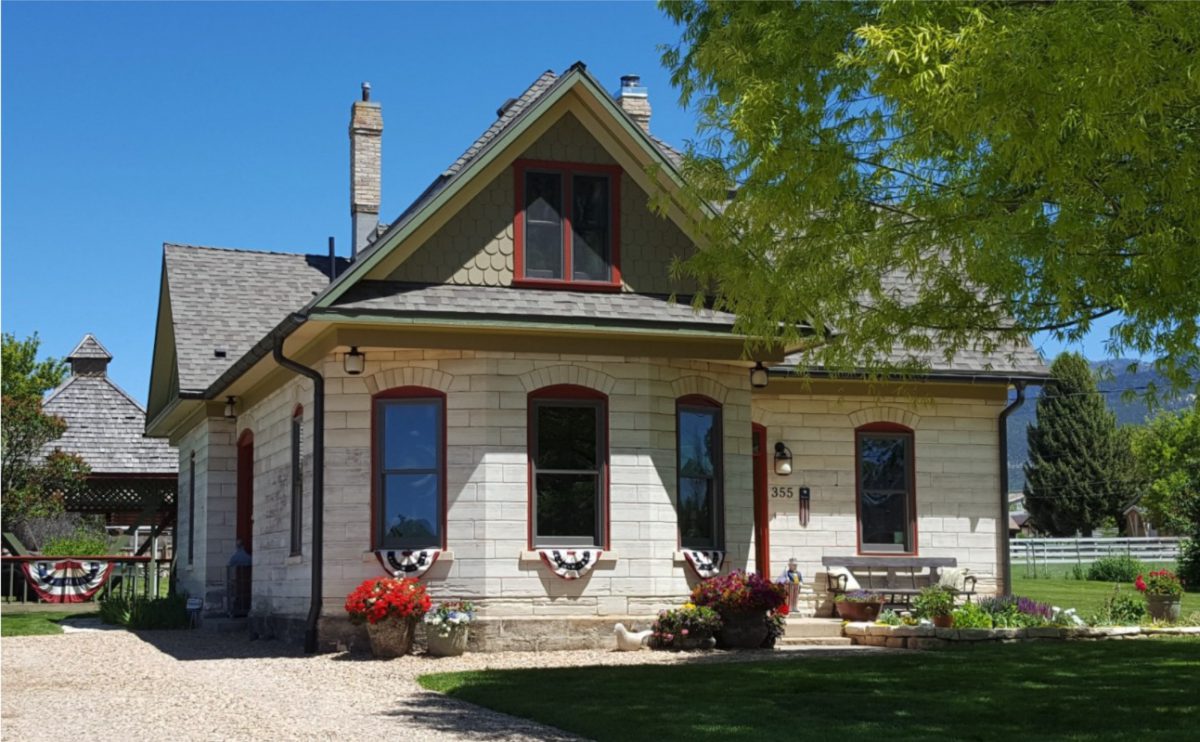By: Christopher W. Merritt, Ph.D., Utah State Historic Preservation Officer
As Utahns continue to celebrate the 125th Anniversary of Statehood, we thought it would be good to highlight how the historic preservation community continues to work to preserve these and other significant places. Continued partnership is key for Utahns to continue to engage and invest in historic preservation whether as private landowners, state/local/federal governments, or interested individuals. Preservation is much more than reading old books and learning about past peoples, our efforts are meant to enliven and enrich the lives of Utahns by preserving and sharing important stories. Key is an educated and engaged citizenry, so how can you engage and help? All of the topics below are ways to participate in the current and future efforts to preserve historic places like those homes, businesses and places of work that are turning 125 years old this year!
Archaeology & Preservation Month
The entire month of May is considered Archaeology & Preservation Month. Every year, the Utah State Historic Preservation Office (SHPO) coordinates events with our partners, whether they be the Bureau of Land Management or the local Hyrum City Museum. These events range from presentations, tours, hands-on activities, and everything in between. This year we have an incredibly diverse line up: whether you are interested in how communities can make historic preservation work for them, how the archaeology of an African American burial ground is shaping public policy, or maybe you just want to chuck an atlatl at a mammoth, you’re sure to find something to educate and inspire.
HOW TO GET INVOLVED
You can find all the events listed on the Event Calendar, and more are being added all the time! Our major events can be found on our blog and on EventBrite when you search for the Utah State Historic Preservation Office. Many events have limited capacities, so head over soon to reserve your spot!
Historic Preservation Tax Credits
When the United States Congress passed the National Historic Preservation Act of 1966, part of the plan was how to incentivize property owners to preserve and rehabilitate their historic businesses. One tool is the Federal Investment Tax Credit program which offers a 20% tax credit (not just deduction) to owners who rehabilitate qualified buildings . Utah has expanded this effort with a State Historic Preservation Tax Credit program offers a 20% tax credit (not just deduction) to owners who rehabilitate qualified buildings used as redicences. Both programs require that the property be listed on the National Register of Historic Places (NRHP).
HOW TO GET INVOLVED
If you currently own, or look to buy and rehab a historic building please visit SHPO’s website to learn more about the program and how you can participate!
Certified Local Government Program
Since the 1980s, the SHPO has coordinated local preservation efforts through cities, towns, and counties by way of the Certified Local Government (CLG) program. SHPO provides pass-through grants to local communities to promote historic preservation efforts, whether brick-and-mortar for rehabilitation or for planning and feasibility studies. Utah has nearly 100 CLGs, which makes us one of the top two in the nation for the number of preservation partners in this program. This helps spread money around to as many communities as possible, the vast majority of which are rural communities such as Spring City, Brigham City, Price, and Emery County.
HOW TO GET INVOLVED
First, see if there is a CLG already in your community by visiting our website. If you have a CLG reach out to the contact and see if there are ways you can help and participate in their commission. If there is no CLG, then reach out to your City/Town Councils, Mayors, etc., and start a conversation about Preservation in your community.
Cultural Site Stewardship
Our newest program is the Utah Cultural Site Stewardship that leverages willing volunteers to help monitor and steward our State’s incredible cultural resources on lands managed by state and federal agencies. All of us, whether we’re hikers, OHVers, archaeologists, climbers, or campers, have a responsibility to take care of not only the natural environment, but the cultural environment as well. Becoming a Site Stewardship is a great opportunity to help protect public lands and cultural resources by monitoring archaeological sites for damage.
HOW TO GET INVOLVED
While you can be a good steward of the past on your own by reading up on ways to properly visit sensitive archaeological sites by visiting the Utah Public Archaeology Network website, you can make a formal pledge to do more by becoming a Steward yourself. Please visit the Stewardship Website and learn more.
In the end, only you can ensure that Utah’s historical treasures are preserved for the next celebration of Statehood. It truly takes a village to protect our heritage.
